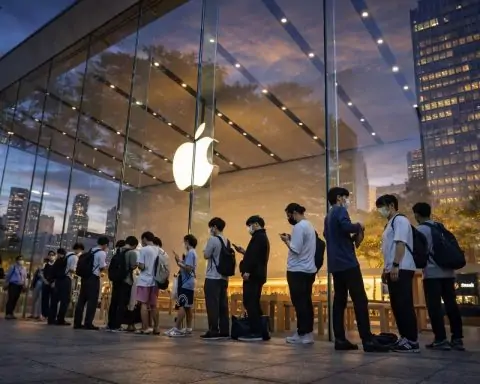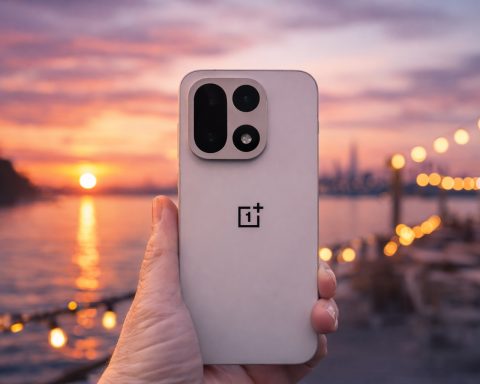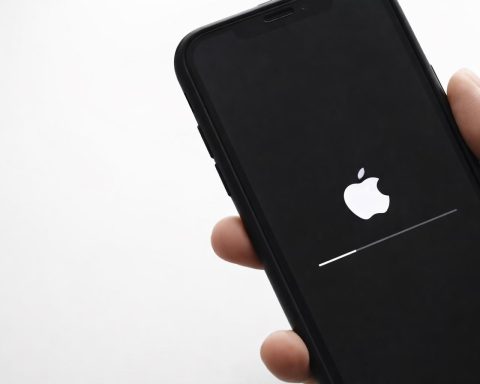Key Facts
- UAE’s du rolls out “5G+” – Telecom operator du launched 5G+ service built on 5G-Advanced technology, doubling mobile speeds and lowering latency across the UAE [1]. “By introducing 5G+… du is setting a new benchmark for mobile performance in the UAE,” said du’s CCO Karim Benkirane [2], noting it will enable seamless ultra-HD streaming, gaming and AI apps.
- Bangladesh embraces Open RAN – Grameenphone (Telenor Bangladesh) and Japan’s Rakuten partnered on a 4G/5G Open RAN pilot, a first in South Asia. The trial will pave the way for nationwide Open RAN deployment, aiming for a more agile, efficient network [3]. “This pilot marks a significant step toward a more future-ready network… unlocking new possibilities for innovation,” said Grameenphone CTO Jai Prakash [4].
- European telecom shake-up – Vodafone and Digi will split Telekom Romania Mobile in a €70 million deal now formally inked [5]. Greece’s OTE Group agreed to sell its Romanian unit, with Digi taking prepaid subscribers, some spectrum and towers, and Vodafone acquiring the rest. “The agreement… will facilitate infrastructure investments [and] more efficient network development,” said OTE CEO Kostas Nebis, calling it a win for Romania’s digital transformation [6]. Vodafone’s chief Margherita Della Valle added it “strengthens our position in Romania… enabling us to invest in the high-quality networks our customers rely on” [7].
- Tower investment signals confidence – Oman Towers Company sealed a strategic partnership with Brookfield Asset Management, which acquired a majority stake in the tower firm in a deal first announced in June [8]. Celebrated in Muscat this week, the move boosts Oman Towers’ financial and operational muscle and aligns with the sultanate’s digital ambitions. CEO Majid Al Kharoosi noted the tie-up extends beyond capital, ensuring long-term sustainability “in alignment with Oman’s national digital ambitions” [9]. Brookfield’s takeover adds ~2,450 Omani tower sites to its portfolio, making it the world’s second-largest tower operator (315,000 sites globally) and the biggest outside China [10].
- First 5G railway network goes live – Germany debuted a 5G network for rail as Deutsche Bahn and Nokia activated the world’s first FRMCS-compatible system (the 5G-based Future Railway Mobile Communication System) on a test route in Saxony [11]. Running in the 1900 MHz band, the standalone 5G network will replace aging GSM-R for train communications. It enables smart automated train control, real-time monitoring and “self-healing” network functions to reduce delays and boost capacity [12] [13]. The project is part of a Europe-wide effort to modernize rail connectivity and allow seamless cross-border operation on 5G [14].
- Stratospheric 5G trials – Japan’s SoftBank advanced its HAPS project, using a high-altitude drone to beam 5G from the sky. In a recent field trial, SoftBank’s prototype High-Altitude Platform Station (HAPS) payload created six mobile coverage cells on the ground and maintained stable 5G links even at the cell edges [15] [16]. This demonstrates that one stratospheric platform could cover a 200 km diameter area. Following a partnership with US-based firm Sceye, SoftBank plans pre-commercial HAPS service by 2026 [17]. The company envisions HAPS augmenting terrestrial and satellite networks to bring connectivity to remote regions as part of a “ubiquitous coverage” strategy [18].
- Australian outage under scrutiny – A major network outage hit Australia’s Optus (the #2 carrier) this week, knocking out emergency call services for 13 hours and coinciding with the deaths of three people who could not reach 000 operators [19]. The technical failure, triggered by a firewall upgrade, lasted from midnight to early afternoon Thursday [20]. Amid public outrage, Optus CEO Kelly Bayer Rosmarin (who resigned on Sept 20) and acting CEO Michael Ackland apologized and vowed full cooperation with government investigations [21] [22]. Officials called the outage “completely unacceptable”, and a formal inquiry will examine why critical backup measures failed.
Carrier & Network Developments
5G+ launch in UAE: In a major network upgrade, du (Emirates Integrated Telecom) introduced 5G+, becoming one of the first in the Middle East to deploy 5G-Advanced on a wide scale. The 5G+ rollout promises up to double the speeds of standard 5G along with significantly lower latency [23]. Du says the technology – which runs on a new standalone 5G-Advanced core – will enable “seamless, reliable, and truly next-generation” experiences from instantaneous 4K video streaming to lag-free cloud gaming and AI applications [24]. “By introducing 5G+…we will deliver more than just faster speeds, unlocking new possibilities for our customers,” explained du’s Chief Commercial Officer Karim Benkirane [25]. The service, operating independently of 4G, requires compatible devices and SIMs, and is part of du’s efforts to future-proof the UAE’s infrastructure for data-intensive services. With 5G adoption accelerating in the Gulf, du’s rival Etisalat is expected to follow suit on 5.5G upgrades as operators seek to stay competitive in network quality.
Open RAN in South Asia: Bangladesh’s top mobile operator Grameenphone (owned by Norway’s Telenor) is teaming with Japan’s Rakuten Symphony to deploy the country’s first Open RAN mobile sites. Announced on Sept 19, the pilot will build several 4G/5G sites using Open RAN architecture as a precursor to nationwide rollout [26]. Grameenphone, which covers 99% of Bangladesh’s population, would be among the first in South Asia to adopt Open RAN at scale. Rakuten Symphony is supplying cloud-native radio units, centralized and distributed units (CU/DU), and OSS software for the project [27]. The move reflects Telenor’s strategy of introducing more flexible, vendor-agnostic networks. “This pilot marks a significant step toward building a more agile, efficient, and future-ready network infrastructure,” said Grameenphone CTO Jai Prakash, noting it will “deliver enhanced connectivity experiences to our millions of subscribers” by enabling greater innovation and cost efficiency [28]. Rakuten Symphony President Sharad Sriwastawa added that the collaboration demonstrates a shared vision to “fully realize the advantages of Open RAN, including greater operational flexibility [and] accelerated network innovation.” If successful, the trial will lead to larger-scale Open RAN deployment across Grameenphone’s network of 86 million subscribers, and could encourage adoption by other carriers in the region.
Virgin Media O2 expands 5G SA (UK): In related news from earlier this week, Virgin Media O2 in the UK announced it has extended its 5G Standalone network to 500 towns and cities, now covering over 70% of the population [29]. This gives VMO2 the largest 5G SA footprint in Britain, edging ahead in the race to deliver fully independent 5G. The cloud-native 5G core enables advanced capabilities like network slicing for mission-critical services and edge computing for low-latency apps [30] [31]. In each of the 500 locations, at least 90% outdoor coverage is achieved on 5G SA [32]. The expansion is part of a £700 million investment this year that also added hundreds of new 4G/5G small cells to boost capacity in dense urban areas [33]. “We are investing £2 million every single day to improve our mobile network…futureproofing our network and paving the way for exciting customer-led innovations ahead,” said VMO2 CTO Jeanie York [34]. The push underscores UK carriers’ accelerated efforts on standalone 5G; BT/EE and Vodafone are also deploying 5G SA, though mostly for enterprise use currently. With broad consumer 5G SA now live, VMO2 is emphasizing reliability and innovation, positioning the network for upcoming services like immersive VR, smart city systems and autonomous vehicles.
Industry Deals & Partnerships
Vodafone & Digi carve up Romania: A notable telecom consolidation in Eastern Europe was finalized as Vodafone and Romania’s Digi agreed to split the assets of Telekom Romania Mobile. The deal, first outlined in 2024, received regulatory approval and definitive agreements were signed on Sept 19 [35]. Greece’s OTE (Deutsche Telekom’s subsidiary) will sell 100% of Telekom Romania Mobile for €70 million, with the buyer’s business divided: Digi Romania will pay €40 million for the prepaid customer base, a portion of spectrum licenses and some tower infrastructure, while Vodafone Group pays €30 million for the postpaid business and remaining assets [36]. OTE’s CEO Kostas Nebis said the sale aligns with OTE’s strategy to streamline its portfolio and “enhance shareholder value.” He noted that partnering with Vodafone and Digi “will facilitate infrastructure investments, enable more efficient network development and enhance customer service” in Romania, aiding the country’s digital progress [37]. Vodafone’s chief executive Margherita Della Valle praised the move, stating it “strengthens our position in Romania, by increasing our local scale and unlocking significant synergy benefits… [It] enables us to invest in the high-quality networks our customers rely on.” [38] Once the transaction closes, Vodafone will solidify its #2 position in the Romanian mobile market, while Digi (already the leading cable and internet provider) secures valuable spectrum and subscriber growth. The shake-up is expected to intensify competition with Orange Romania (the mobile market leader) and improve network quality through shared investments.
Oman tower stake acquired by Brookfield: In the Middle East, an international investment in digital infrastructure underscores investor confidence in emerging markets. Oman Tower Company (OTC) – which operates about 2,450 telecom towers across the sultanate – officially concluded a strategic partnership with Canada’s Brookfield Asset Management, one of the world’s largest infrastructure investors [39]. The deal, celebrated at a ceremony in Muscat on Sept 19, gives Brookfield a controlling stake (reportedly around 80%) in OTC, a move first agreed in June. Brookfield will inject capital and expertise to accelerate tower deployment and modernization in Oman. Majid Amer Al Kharoosi, CEO of Oman Towers, said the partnership goes beyond a cash infusion, strengthening OTC’s finances, operations and governance for the long term. It ensures the company’s growth “in alignment with Oman’s national digital ambitions,” he emphasized [40]. For Brookfield, which manages over $1 trillion in assets, the acquisition expands its already vast telecom tower portfolio to roughly 315,000 sites worldwide, second only to China’s state tower company [41]. (Brookfield entered telecom via its 2020 purchase of a 12% stake in American Tower and this year’s $1.6 billion takeover of ATC Europe and India assets.) The Oman deal not only cements Brookfield’s status as the largest independent tower operator globally, it also signals strong international investor confidence in Oman’s telecom sector. Brookfield’s telecom lead executives noted Oman’s young population and rising mobile data consumption present significant growth upside. The government, which founded OTC in 2018 to spur infrastructure sharing, welcomed the foreign investment as validation of its public–private partnership model. With Brookfield’s backing, OTC is expected to roll out new towers faster – improving rural coverage and 5G readiness – and offer more advanced services to Oman’s mobile operators (Omantel, Ooredoo and Vodafone Oman). The move aligns with a regional trend of separating tower assets to unlock value and accelerate network expansion via specialist towercos and global investors.
Cross-continental subsea cable venture: (Elsewhere in infrastructure cooperation, a consortium of global operators is moving forward with a new Asia-Africa-Europe undersea cable system. PCCW Global (Hong Kong), Telecom Egypt, Italy’s Sparkle and Zain Omantel International have agreed to build the “AAE-2” submarine cable linking Hong Kong and Singapore to Europe via Thailand, the Middle East and Africa [42]. The high-capacity fiber system will interconnect with other cables and terrestrial networks to meet surging demand for international bandwidth [43]. PCCW CEO Frederick Chui called AAE-2 an “advanced, geographically diverse” route leveraging the partners’ prior experience with AAE-1 [44]. Once completed (targeted ~2028), the new cable will significantly boost data connectivity and resiliency between the fast-growing markets of Asia, Africa and Europe. Google is also investing in African infrastructure, announcing plans to build four new cloud and data center hubs to link its Equiano and Umoja subsea cables across the continent [45]. These initiatives highlight the continued push to improve international internet pipes alongside mobile network upgrades.)
Infrastructure & Connectivity Updates
5G-Advanced for rail transport: German rail operator Deutsche Bahn and Nokia have launched the world’s first 5G network tailored for rail operations, marking a milestone in both telecom and transportation. Unveiled on Sept 15 and reported this week, the system is the first live implementation of the Future Railway Mobile Communication System (FRMCS) – the next-generation standard that will replace GSM-R (the 2G-based rail communications system used for decades) [46]. The pilot network went live at Deutsche Bahn’s digital test field in the Ore Mountains of Saxony. Operating on a dedicated 1.9 GHz 5G SA network, it provides reliable, low-latency connectivity with features like automated self-healing in case of failures [47] [48]. This will allow highly secure communication between trains, tracks and control centers, enabling automated train control, smart signaling and real-time monitoring of trains and infrastructure. Unlike GSM-R, which is voice-centric and nearing obsolescence, FRMCS over 5G supports massive IoT and broadband data, paving the way for smarter railways. Deutsche Bahn expects the 5G system to reduce delays and increase capacity on busy lines by allowing trains to safely run closer together with instant communication [49]. It also prepares for “smart stations” that can provide live passenger information and improved cross-border train operation without communication dropouts [50]. Nokia, the technology supplier, noted that this project demonstrates 5G’s ability to meet mission-critical needs of industries like rail [51]. Germany is positioning itself as an early mover in FRMCS, and lessons from the Saxony trials will feed into Europe-wide deployment – as the EU pushes for all member states to adopt FRMCS by the 2030s for seamless international rail connectivity. The UK, France and others are running similar pilots. This German launch shows that 5G isn’t just for consumers – it’s becoming the backbone for transportation and smart infrastructure.
Rural coverage drive in Africa: Improving mobile internet access in underserved regions remains a priority. In Zambia, a public-private project between Airtel Africa and IHS Towers is fast-tracking the build-out of 152 new cell towers to expand 4G and 5G coverage deep into rural areas [52]. By mid-September, 40 of the new towers were operational and 12 more were coming online by the end of the month, officials reported, keeping the rollout on schedule for completion by November [53]. Many sites use solar-powered, hybrid energy systems to ensure reliability off-grid [54]. The Zambian government praised the partnership’s rapid progress – “You cannot expect what you do not inspect,” quipped technology minister Felix Mutati during a site visit, underscoring close oversight [55]. The new towers, some placed near schools and universities, are already connecting thousands who lacked stable internet. Notably, 43 of 51 planned towers in remote provinces are finished, with another 80 towers set for construction nationwide in the coming quarter [56]. This large-scale program exemplifies how African nations are leveraging partnerships to close the connectivity gap: governments provide incentives and streamlined permits while operators and tower companies bring capital and expertise. Similar efforts are underway in Tanzania (where Vodacom announced a $100 million network upgrade this week) and Nigeria (expanding rural sites under its USPF access fund). Although Sub-Saharan Africa’s 5G penetration remains just ~1% [57], investments in 4G/5G infrastructure are steadily increasing. The West Africa Telecom Summit (WATISE) in Lagos this week issued a call for “inclusive digital access” across the region [58], urging more collaborative projects like Zambia’s. As these initiatives bear fruit, millions of new users will come online via mobile broadband, unlocking economic opportunities and digital services in farming, education and healthcare.
Spectrum policy updates: In a noteworthy regulatory development, Germany’s telecom regulator (BNetzA) decided to extend existing mobile spectrum licenses by 5 years beyond their 2025 expiry [59]. Instead of rushing a 2024 auction for 800 MHz, 1800 MHz and 2600 MHz bands, those frequencies will now stay with the current operators (Deutsche Telekom, Vodafone, Telefónica DE) until end-2030. The move aims to avoid a near-term spectrum crunch and align all major mobile bands to expire together, enabling a “larger framework” auction later and preventing artificial scarcity [60]. In return for license extensions, operators must meet stricter coverage obligations (e.g. expanding 5G further into rural areas) and support competition, potentially via wholesale access for smaller players [61]. Germany’s approach diverges from the usual auction-first mantra; it reflects lessons from prior auctions where high fees strained operators. By delaying auctions, regulators can incorporate evolving 6G requirements and possibly package spectrum in ways that encourage network investment over bidding wars. Some rivals and MVNOs criticized the extension as favoring incumbents, but BNetzA argues that a coordinated 2030 auction of a larger spectrum block will ultimately benefit consumers through better networks [62]. Elsewhere, Morocco took steps toward 5G this week by opening a tender for 5G spectrum, aiming for commercial launches in 2025 [63]. And in the United States, after a lapse in auction authority, Congress moved to restore the FCC’s spectrum auction powers with directives to auction mid-band frequencies to fund rural coverage and replace Chinese-made equipment [64] [65]. As the industry eyes 6G on the horizon, such policy maneuvers – balancing immediate connectivity needs with long-term upgrades – are increasingly in focus.
Technology & Innovation
High-altitude connectivity trials:SoftBank is pushing the frontier of mobile internet delivery beyond ground-based towers and satellites – into the stratosphere. On Sept 19, the Japanese operator announced successful tests of its High Altitude Platform Station (HAPS) system, which uses unmanned solar-powered balloons or airships to act as “telco in the sky” platforms. In the latest field trial, SoftBank equipped a drone with a custom payload and established six separate 5G cells on the ground from a single high-altitude vehicle [66]. Even at the edges of the ~100 km radius coverage area per cell, the trial maintained stable broadband connections, effectively demonstrating that one HAPS craft could cover an area up to 200 km in diameter with overlapping cells [67]. This is a leap from earlier one-cell tests and a world-first multi-cell HAPS demonstration. “SoftBank confirmed that communication can be maintained even [at] the periphery of a HAPS coverage area,” the company noted, meaning users at extreme range still got a signal [68]. The trial is part of SoftBank’s plan to launch a pre-commercial HAPS service by 2026, which would complement terrestrial 5G and low-earth orbit satellites to reach remote regions. This June, SoftBank partnered with U.S.-based Sceye to procure next-generation HAPS airships [69], and it also invested in the satellite domain (holding a stake in OneWeb and a partnership with SpaceX’s Starlink) [70]. By integrating HAPS, “ubiquitous coverage” across sky, space and land is envisioned to connect rural villages, ships at sea or disaster zones that traditional cell towers and fiber can’t reach. Industry analysts call HAPS a promising yet challenging endeavor – questions remain on regulatory clearance (cross-border airspace rights and spectrum allocation) and the economics of keeping fleets of stratospheric platforms aloft. Nonetheless, SoftBank’s progress shows that “network in the sky” solutions are edging closer to reality, offering a potential new layer of GSM internet coverage globally. Other players like Alphabet’s Loon (now defunct) and aerospace firms are watching closely, as HAPS could become part of the 6G era toolset.
IoT device ecosystem grows: The past 48 hours saw developments in the Internet of Things (IoT) space aligned with GSM connectivity. Module maker Quectel unveiled a new line of “Direct-to-Cell” (D2C) IoT modules that enable devices to connect globally via LTE cellular without intermediate gateways [71]. These modules aim to simplify wide-area IoT deployments (such as asset trackers or smart meters) by providing out-of-the-box support for worldwide LTE bands and integrated eSIM, reducing the need for local provisioning. On the network side, satellite operator Starlink revealed plans to expand its nascent satellite-to-cellular service beyond emergency texting to include voice, data and IoT connectivity by 2025, leveraging direct links between ordinary phones (or IoT sensors) and SpaceX’s satellites [72]. This could bring basic GSM-like coverage to extremely remote zones or oceans via the sky. And in Switzerland, Nokia opened a new Private 5G and AI development hub to help enterprises and start-ups test advanced IoT applications on standalone 5G networks [73]. The lab, based in Zurich, will focus on industrial IoT use cases that combine 5G connectivity with edge computing and AI – from smart factory automation to augmented reality maintenance solutions. These moves highlight how the IoT ecosystem is evolving in tandem with 4G/5G: on one end, hardware makers are simplifying cellular IoT integration for mass adoption, and on the other, network providers (terrestrial and satellite) are extending coverage and capabilities to ensure those billions of new devices can stay connected anywhere. With global IoT connections forecast to exceed 30 billion by 2030, every incremental enhancement – be it a more versatile module or a novel network like satellite-to-IoT – contributes to the overall vision of an “Internet of Everything” seamlessly linked via GSM infrastructure.
Network Resilience & Outages
Optus 000 outage sparks investigation: A serious network failure in Australia has raised alarms about telecom resilience. On Sept 20, Optus – the country’s second-largest mobile carrier – is reeling from public and government backlash after an overnight outage on its network disabled emergency call (000) services for over 12 hours [74]. The disruption, which began around 00:30 local time Thursday and wasn’t fully resolved until after 13:00, meant that some customers in parts of South Australia, Western Australia and the Northern Territory could not reach police, ambulance or fire services. Tragically, authorities confirmed three deaths occurred during the outage window: an eight-week-old infant, an elderly woman and an elderly man – cases where delayed emergency response might have been a factor [75]. The outage itself was traced to a “glitch” during a routine software and firewall upgrade in the Optus core network [76]. While backup systems should have maintained critical services, they failed to kick in. Facing outrage, Optus CEO Kelly Bayer Rosmarin initially apologized, and by Saturday the company’s parent Singtel announced her resignation. Interim CEO Michael Ackland and Optus executives are cooperating with multiple investigations launched by the Australian government and regulators [77] [78]. “We will fully cooperate with any and all investigations… [and] we deeply apologize,” Optus leaders pledged in press conferences, as they work to regain trust. The federal communications minister called the incident “completely unacceptable” and is fast-tracking an inquiry into why it took so long to restore 000 access and whether regulatory penalties or new reliability standards are warranted. The incident underscores the critical dependency on mobile networks for life-saving services and has reverberated throughout the industry. Analysts note that while outages happen, the Optus incident highlights the need for robust emergency call routing redundancies – for example, automatic call forwarding to rival networks if one network fails. It also raises questions about telecom crisis communication: many affected Australians learned of the outage only after trying to dial 000. Neighboring New Zealand promptly demanded its carriers audit their emergency call systems to avoid a similar fiasco. For Optus, which suffered a major data breach last year, the fallout is severe – beyond investigations and possible fines, its brand reputation is damaged. The carrier will now be under pressure to invest in network hardening, thorough testing of upgrades, and perhaps establishing mutual aid agreements with competitors for emergency handling. The takeaway for operators globally is clear: as telecom networks become ever more central to public safety, resilience and fail-safe mechanisms are as critical as speed and capacity in network design. <hr>
Sources: Company press releases, official statements and news reports from Reuters, Mobile World Live, Telecoms.com, RCR Wireless, The Business Standard, TechAfrica News, and other reputable outlets, as cited above. All information is from developments and announcements on September 19–20, 2025, unless otherwise noted.
References
1. gulfbusiness.com, 2. gulfbusiness.com, 3. www.telecoms.com, 4. www.telecoms.com, 5. www.mobileworldlive.com, 6. www.mobileworldlive.com, 7. www.mobileworldlive.com, 8. techafricanews.com, 9. techafricanews.com, 10. techafricanews.com, 11. ftnnews.com, 12. ftnnews.com, 13. ftnnews.com, 14. ftnnews.com, 15. www.telecoms.com, 16. www.telecoms.com, 17. www.telecoms.com, 18. www.telecoms.com, 19. www.reuters.com, 20. www.reuters.com, 21. www.reuters.com, 22. www.reuters.com, 23. gulfbusiness.com, 24. gulfbusiness.com, 25. gulfbusiness.com, 26. www.telecoms.com, 27. www.telecoms.com, 28. www.telecoms.com, 29. www.bez-kabli.pl, 30. www.bez-kabli.pl, 31. www.bez-kabli.pl, 32. www.bez-kabli.pl, 33. www.bez-kabli.pl, 34. www.bez-kabli.pl, 35. www.mobileworldlive.com, 36. www.mobileworldlive.com, 37. www.mobileworldlive.com, 38. www.mobileworldlive.com, 39. techafricanews.com, 40. techafricanews.com, 41. techafricanews.com, 42. www.mobileworldlive.com, 43. www.mobileworldlive.com, 44. www.mobileworldlive.com, 45. subtelforum.com, 46. ftnnews.com, 47. ftnnews.com, 48. ftnnews.com, 49. ftnnews.com, 50. ftnnews.com, 51. ftnnews.com, 52. techafricanews.com, 53. techafricanews.com, 54. techafricanews.com, 55. techafricanews.com, 56. techafricanews.com, 57. www.ecofinagency.com, 58. apanews.net, 59. www.bundesnetzagentur.de, 60. www.bundesnetzagentur.de, 61. www.bundesnetzagentur.de, 62. www.bundesnetzagentur.de, 63. www.instagram.com, 64. www.reuters.com, 65. www.reuters.com, 66. www.telecoms.com, 67. www.telecoms.com, 68. www.telecoms.com, 69. www.telecoms.com, 70. www.telecoms.com, 71. www.quectel.com, 72. www.rcrwireless.com, 73. www.rcrwireless.com, 74. www.reuters.com, 75. www.reuters.com, 76. www.reuters.com, 77. www.reuters.com, 78. www.reuters.com





